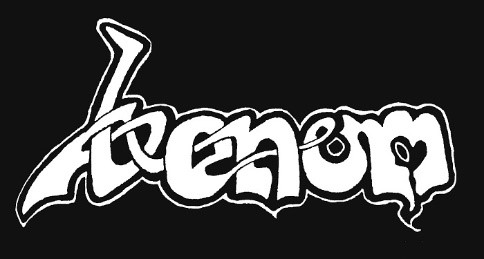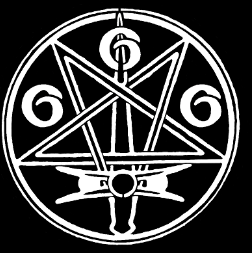Authors
The recent Intellectual Property Enterprise Court decision in Conrad Lant v Plastic Head Music Distribution Ltd & Anor [2025] EWHC 1954, offers a cautionary tale for musicians and businesses alike.
The case highlights how the lack of documentation and formal agreements during the band Venom’s early years, left questions of IP ownership unresolved for decades. With witnesses asked to recall events from over 40 years ago, the case is a stark reminder of the risks of informal arrangements in creative ventures.
Facts
The dispute centred on the ownership of copyright in artwork and logos associated with the iconic 1980s metal band Venom. The defendant and former band drummer, Anthony Bray, licensed Plastic Head to sell merchandise which included designs created by claimant and former band vocalist, Conrad Lant. Similarly, Lant had also licensed the band’s artwork for use on merchandise including designs by Bray. Both Lant and Bray claimed ownership of various designs used on Venom‘s albums and merchandise.
Venom formed in Newcastle in 1978 as pioneers of the black metal music and influenced countless artists around the globe. Despite their musical success, the band’s artwork and branding had been created informally and poorly documented. Bandmembers assumed logos and album cover designs were ‘shared’ assets when marked with the band’s iconic name but this was never formally recorded. Decades passed and the lack of clarity led to a major dispute when former band members began independently licensing merchandise featuring these designs.
Without formal IP agreements or copyright assignments in place, evidence of ownership was scarce which resulted in the Court relying on the memories of witnesses of events from the late 1970s and 1980s.
The decision
With Lant joining the band a year after its formation, the Court held that Bray was the owner of the original Venom logo.
However, despite his later arrival and the decades that had passed, Lant was able to evidence a number of design sketches to demonstrate he was the creator and copyright owner of most of the remaining disputed designs.
Complications of informal collaboration
When classifying rock bands, courts typically treat them as partnerships. This means that the intellectual property in the band’s name, logos and album artwork are regarded as partnership assets jointly owned by all the band members unless there is a clear agreement stating otherwise.
Joint ownership via a partnership sounds simple, but in practice it creates significant challenges:
- Disputes after departure: when people leave, the remaining members of the group retain the rights as the continuing members of the partnership.
- Complete dissolution: if all the band decide to call it a day, then there should be an agreement to determine what happens to the partnership assets including the intellectual property rights but this rarely happens.
- Rights created outside the normal activities of the band: a rock group’s primary purpose is to make music and so it does not necessarily follow that, for example, designs created by a band member for an album cover are partnership assets.
- Pre-existing rights: the first owner of copyright is the creator and so, anything done before the band member joined the group will be owned by the band member and not the group.
- Licensing rights: co-owners must all consent to grant a licence.
- Inheritance issues: on death, rights pass to the beneficiaries not surviving collaborators.
For Venom, decades of informal collaboration meant that when merchandise deals emerged in the 2020s, both parties claimed rights leading to costly litigation.
Consequences of bad IP management as a business grows
This case underscores a broader issue for growing businesses. Many businesses start as sole traders or informal partnerships which then incorporate as limited companies for tax and liability benefits. However, IP created before incorporation remains with the original individuals unless formally assigned to the new entity. Failing to transfer IP can have serious consequences:
- The company does not “legally” own what it regards as its intellectual property assets.
- Investors may hesitate when the ownership position is unclear.
- Disputes can arise years later, such as competing claims as to ownership, as evidenced in Lant v Plastic Head or the company cannot enforce its rights because it cannot prove ownership.
Best practice? Draw up and execute formal IP agreements as soon as possible and always at the point of incorporation with updates to registrations for trade marks, patents, and designs. This ensures continuity and avoids future disputes.
Relevance for our commercial clients
This case sets an important precedent for businesses in all sectors.
All businesses have a name and many rely on logos, software code and/or product designs and so unless formal steps are taken, are subject to these IP risks. The lack of clarity of IP ownership can place your most valuable assets in serious jeopardy. Whilst it is something that seems easy to ignore in the short term, this can cause serious long-term issues and potential legal challenges, particularly if you are planning to seek investment, sell up or expand internationally in the future.
Practical steps for businesses to avoid IP Traps:
- Document everything: Keep dated records of design drafts, agreements, sketches and any contributions.
- Agree ownership early: Use agreements to define IP rights and their ownership.
- Register key assets: Logos and names should be trade marked where possible.
- Plan for growth: If incorporating, transfer all IP to the new entity promptly.
- Seek legal advice: IP law is complex, professional guidance can prevent costly mistakes.
Conclusion
So, whether you’re forming a band, scaling a start-up or expanding your business, IP is one of your most valuable assets and therefore something you must prioritise. Venom‘s dispute in Lant v Plastic Head demonstrates the dangers of informal arrangements and how they can result in years of uncertainty and eventually litigation with your partners.
Protect your creative and commercial future by securing ownership from the beginning.
Contact our Intellectual Property experts, who can help you ensure the correct agreements are in place to avoid such disputes.
Print article




